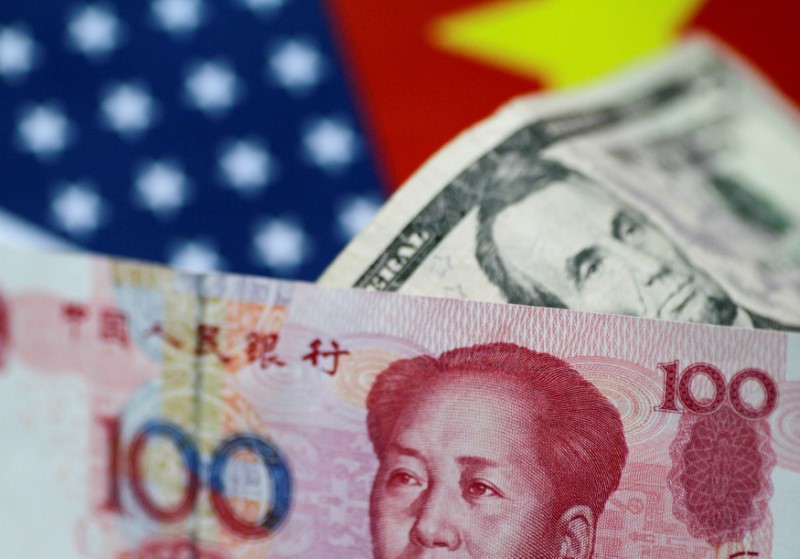
Investing.com – Most Asian currencies weakened on Wednesday, with the Chinese yuan hitting its lowest level in six months as persistent concerns over high U.S. interest rates sent traders leaning toward the dollar.
Sentiment towards risk-oriented regional markets remained weak, especially amid continued hawkish comments from the Federal Reserve. Concerns about sluggish regional economic growth also carried weight.
Both indexes rose 0.1% in Asian trade, extending gains overnight after Minneapolis Fed President Neel Kashkari said policymakers were not ruling out further rate hikes to combat inflation.
His comments came just days before the release of closely watched data that is the Fed’s preferred measure of inflation.
Chinese Yuan weakens, USDCNY hits 6-month high
The Chinese yuan weakened as the pair hit its highest level since mid-November following the People’s Bank of China’s soft mid-point fix.
The PBOC has until now maintained tight control over the yuan to stem the currency’s weakness, but now appears to be easing those controls slightly amid sustained selling pressure on the yuan and weakness in the Chinese economy.
Beijing continued to take measures to support the property market, which helped instill some optimism about the country. But traders remain skeptical about how Beijing plans to finance and implement its real estate stimulus measures, with the sector facing more than three years of decline.
Japanese yen weakens, Bank of Japan comments give mediocre signals
The Japanese yen weakened further on Wednesday, with the pair rising above 157 yen per dollar.
The currency did not receive much support from rather mediocre comments from Bank of Japan officials.
Bank of Japan member Adachi Seiji warned the central bank could rush to tighten policy if the yen’s weakness weighs on inflation. He also predicts that inflation will increase in the summer-autumn period.
But Seiji also said the BOJ needs to be cautious in how it tightens policy and that policy will remain accommodative in the short term to help strengthen the Japanese economy.
Australian dollar finds little support from hot CPI
The Australian dollar showed limited gains on Wednesday, with the pair rising modestly even as inflation rose more than expected in April.
The data fueled expectations that the Reserve Bank of Australia will have to keep rates high longer or even raise them further this year to bring inflation down.
This scenario bodes well for the Aussie, although this optimism is countered by a stronger dollar and concerns about slowing economic growth in Australia.
Asian currencies weakened overall. The South Korean won rose 0.2% and the Singapore dollar gained 0.1%.
The Indian rupee rose 0.1% and was seen returning to the all-time high reached in May above 83 rupees per dollar.


